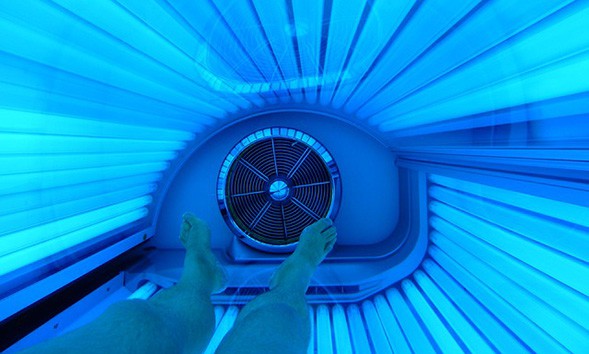In a new study of indoor tanning and skin cancer risk, the use of indoor tanning among non-heterosexual black male teens was found to be nearly equal to that of heterosexual white females. The study, led by San Diego State University researcher Aaron Blashill, was recently published in the journal JAMA Dermatology.
“Contrary to popular thought, racial and ethnic minorities engage in indoor tanning and it appears to be particularly concentrated among sexual-minority adolescent boys,” said Blashill, an assistant professor of psychology.
The data comes from the 2015 Youth Risk Behavior Survey, a nationally representative survey that examines the prevalence of risky health behaviors among 9th- to 12th-grade public and private school students.
Earlier studies have shown non-heterosexual minority males have one of the highest known prevalence rates of skin cancer, with up to twice the risk of heterosexual males.
Confusion over why people with darker skin might use indoor tanning stems from an incomplete understanding of why people tan in the first place, Blashill said.
“Many only think of indoor tanning as something people do to darken their skin, so the idea that a black individual would tan at all is hard for some to grasp,” he said. “But if we think of indoor tanning as a coping strategy, then the findings begin to make more sense.”
Because UV exposure can induce relaxation through the release of natural opioids in the brain, it’s possible that non-heterosexual black and Hispanic teenage boys engage in indoor tanning to help regulate psychological distress, which could be the result of discrimination, prejudice, and victimization based on their sexual orientation and/or race and ethnicity, Blashill explained.
While indoor tanning is banned for minors in California and several other states, Blashill said these restrictions are not 100 percent effective.
“It is important to understand what’s driving indoor tanning among these boys so we can develop future skin cancer prevention and education campaigns targeted at the high-risk group.”
Blashill is currently working on a follow-up study evaluating the indoor tanning use of 14- to 35-year-old sexual-minority males in San Diego County to see if there is a similar phenomenon among college-aged and young adults.
If our reporting has informed or inspired you, please consider making a donation. Every contribution, no matter the size, empowers us to continue delivering accurate, engaging, and trustworthy science and medical news. Independent journalism requires time, effort, and resources—your support ensures we can keep uncovering the stories that matter most to you.
Join us in making knowledge accessible and impactful. Thank you for standing with us!

